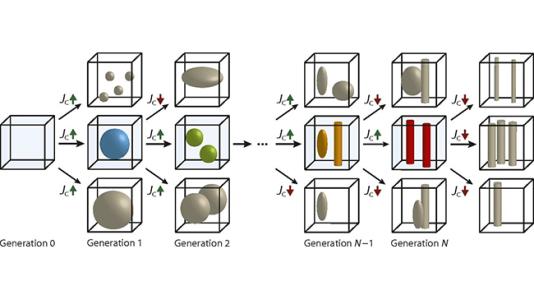
Scientific Achievement
We developed a targeted evolution genetic algorithm to create a vortex-pinning genome that can be used to enhance the current carrying capability of high temperature superconductors.
Significance and Impact
The novel simulation tool advances the materials-by-design paradigm using evolution-based processes and can be adapted to improve the functional properties of advanced materials.
Research Details
- Use of leadership class computing and genetic algorithm based artificial intelligence
- Numerical targeted selection used to automatically recognize defect configurations for better vortex pinning
- Selected configuration is used as seed for a new population generation of defects and the system topology evolves to a defect landscape with the highest critical current
Work was performed at Argonne LCF, Oak Ridge LCF, and Computing Facility at Northern Illinois University.
Argonne National Laboratory seeks solutions to pressing national problems in science and technology. The nation’s first national laboratory, Argonne conducts leading-edge basic and applied scientific research in virtually every scientific discipline. Argonne researchers work closely with researchers from hundreds of companies, universities, and federal, state and municipal agencies to help them solve their specific problems, advance America’s scientific leadership and prepare the nation for a better future. With employees from more than 60 nations, Argonne is managed by UChicago Argonne, LLC for the U.S. Department of Energy’s Office of Science.
The U.S. Department of Energy’s Office of Science is the single largest supporter of basic research in the physical sciences in the United States and is working to address some of the most pressing challenges of our time. For more information, visit https://energy.gov/science.